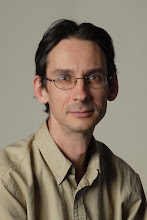Thursday, June 7, 2012
I'm beginning to wonder if we're entering (or indeed have entered) an aspatial arrangement, and if technology is leading the charge. A few recent examples have struck me and got me wondering if it was technology that caused earlier shifts in the late eighteenth century that had western european society moving from a non-spatial (or better yet aspatial) world to a more fully spatialised one, a world where ideally there was full congruence between the Nation and the State.
In the current context, I'm struck by communications technology in particular that no longer cares where we are to assign identity (in this case telephone numbers). Although somehow they manage to charge for long distance calls. Consider for example MTS's recent approach to a lack of numbers. They've chosen to add three digit codes to all new phone numbers, but where in the past this was known as an 'area code' and truly did refer to an area, the new system presumably because of the mobility of the telephones, simply adds these numbers to any new line. There is no longer a good way to determine where physically a phone number is located. If this is the case, what was the technology in the eighteenth century that provided the push into a spatial world. Was it, as I had surmised many years ago, the advent of surveying and cartographic techniques, pioneered by Ambros von Amman, David Thompson, and the rest?
In the current context, I'm struck by communications technology in particular that no longer cares where we are to assign identity (in this case telephone numbers). Although somehow they manage to charge for long distance calls. Consider for example MTS's recent approach to a lack of numbers. They've chosen to add three digit codes to all new phone numbers, but where in the past this was known as an 'area code' and truly did refer to an area, the new system presumably because of the mobility of the telephones, simply adds these numbers to any new line. There is no longer a good way to determine where physically a phone number is located. If this is the case, what was the technology in the eighteenth century that provided the push into a spatial world. Was it, as I had surmised many years ago, the advent of surveying and cartographic techniques, pioneered by Ambros von Amman, David Thompson, and the rest?
Subscribe to:
Post Comments (Atom)




No comments:
Post a Comment